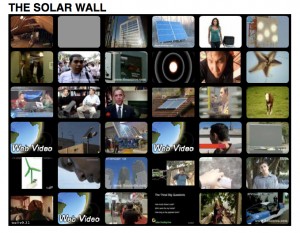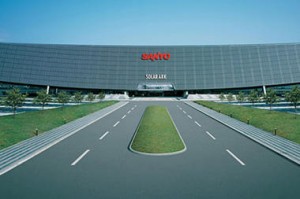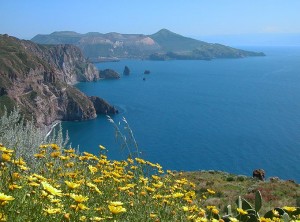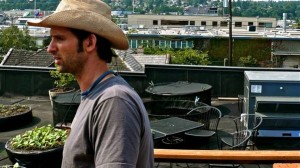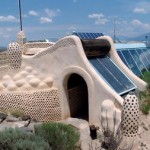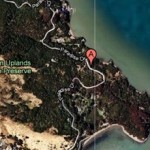 The first race for electric cars, around the world in 80 days, will start on August 16, 2010, 13:30, on the Place des Nations in Geneva, Switzerland.Jules Verne’s dream to go around the world in 80 days became a reality a long time ago, but is it possible to make a tour around the world in 80 days with emission-free vehicles? Five Teams from four continents are taking up the challenge. On 16 August they will start with their electric vehicles on the longest and greenest race of all time: the ZERO Race.
The first race for electric cars, around the world in 80 days, will start on August 16, 2010, 13:30, on the Place des Nations in Geneva, Switzerland.Jules Verne’s dream to go around the world in 80 days became a reality a long time ago, but is it possible to make a tour around the world in 80 days with emission-free vehicles? Five Teams from four continents are taking up the challenge. On 16 August they will start with their electric vehicles on the longest and greenest race of all time: the ZERO Race.
In 2008, Louis Palmer became the first person ever to drive a solar powered car around the world. This project was known as the Solartaxi. It took him 534 days to complete his circumnavigation and spread his powerful message that renewable energies are reliable, affordable and ecologically responsible!
In 2010, he intends to take things even further. This time Louis Palmer is challenging the world to a race via the The Zero Emissions Race. This global event is planned to be a thrill, as well as an opportunity to harness public interest and generate new ways of thinking about mobility, cars and renewable energies. The Zero Race also aims to make zero emission energy solutions accessible to a worldwide audience.
Competitors from all corners of the globe are invited to drive their own zero emission race vehicles. Each competitor’s lean, mean, green machine will be designed to run strictly on renewable energy, such as solar, wind, wave or geothermal. Thus, when the chequered flag will finally come down at the end of the Zero Race, the ultimate winner will be Planet Earth.
READY STEADY GO !
Interview with Egyptian Eco-Fashion Designer
Nadia Nour
by Arwa Aburawa
Since her launch in 2008, Egyptian fashion designer Nadia Nour has been wowing fashionistas with her elegantly glamorous and individual fashion range which also happen to be environmentally-friendly.
Graduating with a degree in Fashion and Philosophy, it’s seems that Nadia Nour was destined to create an ethical fashion range that gracefully combines her love for fashion with concerns for the planet. With a focus on organic cotton, silks and vintage fabrics, Nadia has also shown her commitment to her home city by producing locally in New York City’s Garment District.
She insists that you can still wear high-end fashion, show off your personal style and reduce your carbon footprint. I spoke to Nadia about what inspires her work, her top tips for eco-shoppers and how her Arab heritage shapes her work.
What inspired you to create an environmentally-friendly clothing range?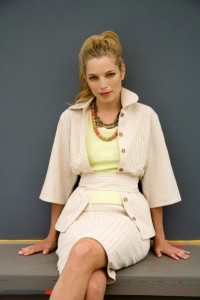
As I learned about the fashion industry’s negative impact on the environment, I realized that I did not want to be part of the problem. By producing locally in NYC, I am reducing emissions caused by transportation as well as helping to sustain the local economy and maintain manufacturing jobs through my support of the NY Garment District.
My organic fabrics are dyed with all natural ingredients which helps to keep toxic dyes from being flushed into our water supply. My organic cottons are also grown without the use of pesticides which is not only healthier for people and the planet, but also makes for a softer and more durable fabric.
Although you use natural and organic materials and dyes, your range of clothing is very sophisticated and glamourous. Was this a conscious decision?
Definitely, my goal is to design clothes that are beautiful and that are also organic. Women do not have to sacrifice style to be green.
What do you think is going to be the next big thing in Eco-Fashion?
I think we will continue to see an expanding variety of organic fabrics and collections.
Does your Arab heritage influence your work?
Yes, I am inspired by the rich colors and beautiful geometric designs found throughout the Arab world. The idea of world traveling and cross-cultural influence inspires much of work.
What eco designers do you admire?
Karim Rashid is inspiring in his approach to lifestyle design and his environmentally-conscious methods.
Any advice or top tips to offer the fashion conscious eco warrior?
Read your labels and do your homework. I think the organic fashion movement should follow the example of the organic food movement. People educated themselves about the ingredients and manufacturing of their food and as awareness was raised, demand was created for organic food. Companies responded and today almost every grocery store in the US has an organic section.
Finally, what can we expect from Nadia Nour in the future?
I am developing initial plans for expanding my line to include accessories and jewellery.
Stay tuned for more on Nadia Nour’s range of eco accessories and jewellery to go with her certified organic, lovely and sustainable clothing.
Former White House Solar Panel Goes to Chinese Museum
The fate of some former White House solar panels could be seen as an example of how differently the U.S. and China regard solar energy.
Since 1991, Unity College in Maine has owned 32 solar panels which Jimmy Carter had installed on the White House during his administration. In an unintentionally symbolic move, Ronald Reagan had them removed. Unity College was aspiring to be known as “America’s Environmental College” and acquired the panels in 1991. Some panels were used to heat water at the college’s cafeteria, but were past their useful life by 2005.
One of the historical panels was recently given to China’s Himin Solar Energy Group, the largest manufacturer of solar hot water heaters in the world. The company will display the panel at the Solar Science and Technology Museum in Dezhou, part of Himin’s 800-acre “China Solar Valley” manufacturing complex. Unity gave another panel to the Solar Energy Industries Association (SEIA).
Huang Ming, chairman of Himin Solar Energy Group, and a representative of SEIA accepted the gifts at a ceremony on the Unity campus. However, the ceremony was not well-attended by representatives of the U.S. government. Unity invited a number of congressional representatives, senators, and the governor. All said no.
“Here is the largest solar energy company in Asia and maybe the world; their CEO is visiting Unity, Maine, and we’re not getting responses from the politicians who are charged with bringing businesses to Maine,” said Mark Tardif, of Unity College. “You would think the people involved with economic development would be flocking to this, but they’re not.”
The panels are not the photovoltaic kind used create electricity. They are flat plate solar collectors, which heat water by circulating it though a series of fins. The panels are old-fashioned, but flat plate collectors are still commonly used for some purposes.
Most of the 32 White House panels are in storage at Unity. One was taken apart for educational purposes. Three have been donated, one each to: the Jimmy Carter Library and Museum, the Smithsonian Institution, and NRG Systems – a Vermont wind-energy company. Another panel was loaned to Google and recently returned and one is being displayed on the Unity Campus.
Visit Pie Ranch

WHAT’S INSIDE
SUBSCRIBE TO UPDATES HERE
NEW! ECO TRAVEL
NEW: ORGANIC
NEW! WIND & WAVES
 TV
TV
VISIT THE SOLAR WALL
QUESTPOINT GOES MOBILE – Beta






